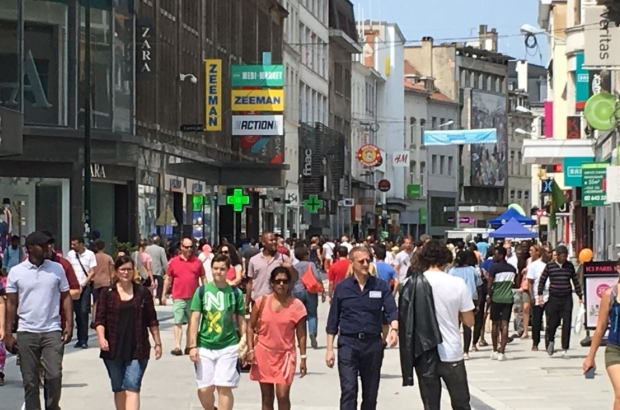- Daily & Weekly newsletters
- Buy & download The Bulletin
- Comment on our articles
Ixelles unveils plans to improve Porte de Namur neighbourhood
The Brussels municipality of Ixelles has announced plans to "bring back vitality" to one of the city's busiest neighbourhoods, around the Porte de Namur, in a partnership between public authorities, real estate owners, investors and local groups.
A digital platform MaPortedeNamur.be is also being developed, which will feature local businesses and their opening hours to increase their visibility.
Ixelles mayor Romain de Reusme said that the initiative would help to improve the neighbourhood's image, after executives of neighbouring ING bank, Deutsche Bank and insurance firm Axa condemned the problems of drugs and homelessness in and around the local metro station in an open letter seen by Bruzz.
Ixelles municipal council said the potential to become “an iconic attraction” in Brussels is already great. The Chaussée d’Ixelles is the second-largest commercial area in the capital after Rue Neuve, and much livelier in the evenings.
“The momentum is now there, because 15 large real estate projects are in the pipeline, five of which already have a building permit,” said Ixelles alderwoman for urban planning Julie De Groote.
“The big advantage of this alliance is that we now have a point of contact at the commune for the permit procedures and can coordinate the projects,” real estate developers Vastned and Bruvaco said in a joint statement.
One of the most visible projects will be the new Kentucky Fried Chicken (KFC) planned for the corner of Chaussée d’Ixelles and Avenue de la Toison d’Or. Across the street, on Square du Bastion, will be an Italian restaurant, an Italian furniture store and a food market.
According to the plans, the post office building with the round arches will be demolished for conversion into housing or shops. In addition, Vastned hopes to build a gym, wellness facilities and even an outdoor swimming pool on the floors of the former Inno building, where Zara is now located.
De Groote is keen to see as many homes as possible above the shops on the Chaussée d’Ixelles, to create a healthy mix between living and shopping. But real estate firms say that this will mean giving up some shop facades to construct the main entrance to the apartments.
Another concern is a "hamburgerisation" of the Porte de Namur - a proliferation of fast-food outlets - said Ixelles alderman for trade Gautier Calomne: “We are certainly not going to only allow catering establishments. There must be a healthy commercial mix.”
The biggest worry remains the feeling of insecurity due to the sometimes very visible presence of drug addicts. De Reusme said he was aware of this problem and is having monthly consultations with Brussels public prosecutor Julien Moinil about an action plan.
“I can tell you strong measures are being used to combat the drug problem around the Porte de Namur, but we also know that there is still a lot of progress to be made in this area,” he told Bruzz.
The African district of Matonge is strikingly absent from the new plans. But this does not mean forgotten, the mayor emphasises.
“On the contrary: Matonge is the calling card of Ixelles throughout Europe. Whether you come from France, from the Netherlands or Germany, everyone knows Matonge. But we cannot deny that there are drug problems in that neighbourhood, with mafia conditions.
“We are going to do everything we can to get back this ‘territory’, so Matonge will not be known in Europe as a drug centre, but as a lively Congolese or African district in Ixelles.”















